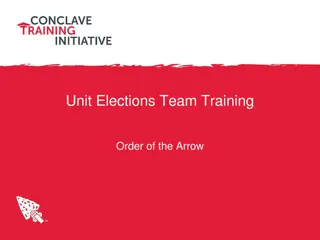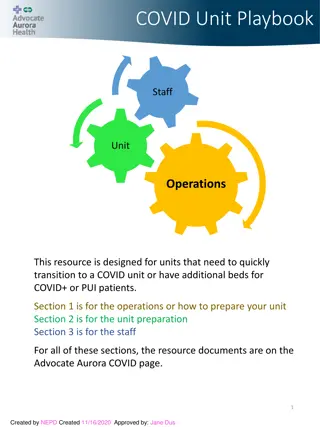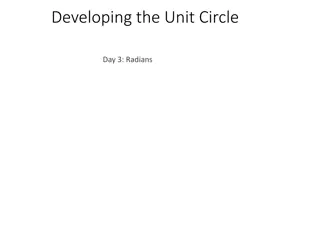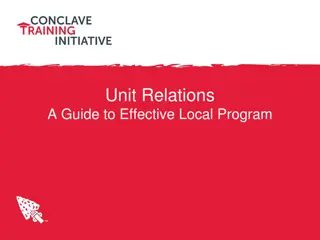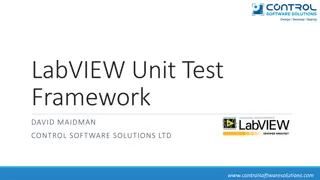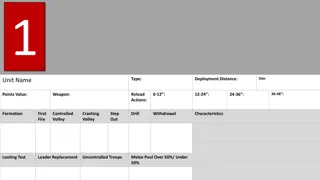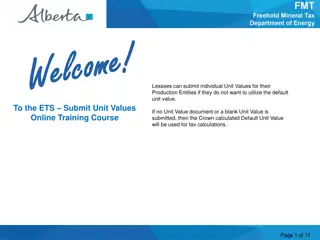
Understanding Compensation Management in Human Resource
Learn the importance of compensation management in human resources, its objectives, and types of compensation. Explore how compensation plays a crucial role in attracting, motivating, and retaining employees while enhancing organizational effectiveness.
Download Presentation

Please find below an Image/Link to download the presentation.
The content on the website is provided AS IS for your information and personal use only. It may not be sold, licensed, or shared on other websites without obtaining consent from the author. If you encounter any issues during the download, it is possible that the publisher has removed the file from their server.
You are allowed to download the files provided on this website for personal or commercial use, subject to the condition that they are used lawfully. All files are the property of their respective owners.
The content on the website is provided AS IS for your information and personal use only. It may not be sold, licensed, or shared on other websites without obtaining consent from the author.
E N D
Presentation Transcript
PRERNA BHATI UNIT 4
What is compensation management Compensation Management is designing and implementing total compensation package with a systematic approach to providing value to employees in exchange for work performance, Compensation is a systematic approach to providing monetary value to employees in exchange for work performed. Compensation may achieve several purposes assisting in recruitment, job performance, and job satisfaction.
Objectives To recruit & retain qualified employees. To increase ormaintain morale. To determine basic wage &salary. To reward for job performance.
Its importance Compensation is an integral part of human resource management which helps in motivating the employees and improving organizational effectiveness. Effectiveness in termsof: Attracting & Retaining Talent Motivating talent for better performance Cost effectiveness
Its importance ImageBuilding EnsureEquity Legal Compliance Institutional effectiveness Effective Compensation Administratively Efficient Attracttalent RewardValued Behavior Motivate& RetainStaff Employee Management
Its importance HIGH COMPENSATION LOW COMMITMENT Hired Guns HIGH COMPENSATION HIGH COMMITMENT Professionals LOW COMPENSATION LOW COMMITMENT Workers as commodity LOW COMPENSATION HIGH COMMITMENT Family oriented organization
Types ofCompensation Direct compensation It refers to monetary benefits offered and provided to employees in return of the services they provide to the organization. The monetary benefits include basic salary, house rent allowance, conveyance, leave travel allowance, medical reimbursements, special allowances, bonus, PF/Gratuity, etc. They are given at a regular interval at a definite time.
Types ofCompensation Indirect compensation It refers to non-monetary benefits offered and provided to employees in lieu of the services provided by them to the organization. They include PaidLeave, Car / transportation, Medical Aids and assistance, Insurance (for self and family), Leave travel Assistance, Retirement Benefits, Holiday Homes.
Constituents of Compensation CTC,heads Wage and Salary: The most important component of compensation and these are essential irrespective of the type of organization Administered individually Provides employee stabile income and can plan chores of daily life, budget Incentives: Incentives are the additional payment to employees besides the payment of wages and salaries. Often these are linked with productivity, either in terms of higher production orcost saving or both. Can be administered individually and forgroups Additional compensation having immediate effect and no future liability.
Constituents of Compensation CTC,heads Fringe Benefits: Fringe benefits include such benefits which are provided to the employees either having long-term impact like provident fund, gratuity, pension; or occurrence of certain events like medical benefits, accident relief, health and life insurance; or facilitation in performance of job like uniforms, Canteens, recreation, etc. Administered for a group mostly Perquisites: These are normally provided to managerial personnel either to facilitate their job performance or to retain them in the organization. Such perquisites include company car, club membership, free residential accommodation, paid holiday trips, stock options,etc. Administered individually mostly
Purpose ofCompensation BUSINESS STRATEGY PEOPLE REQUIREMENT Compensation Management
Purpose ofCompensation For Employer Brand image (employer of choice) for attracting candidates Motivating employees for higher productivity and performance Retaining talent Consistency in compensation Provoking healthy internalcompetition For Employee Work-life Balance Recognition as tool to self esteem Planning for better quality of life
Factors affectingCompensation Mental requirements, Physical requirements, Skill requirements, Responsibility level,and Working conditions (risk, time,hazards)
Factors affectingCompensation Organizational Affordability Man powerplanning Sales salaryratio MarketRate for Talent Economic Conditions
Inputsin Compensation Structure Job Evaluation Job Specification Job Description Time and MotionStudy Market Survey Demand and Supply Industry wise benchmarking
Lawsgoverning and affecting Pay Structure Minimum WagesAct (discuss minimum remuneration, its heads Income TaxAct (discuss heads which provide tax relief) Equal RemunerationAct Payment of WagesAct (discuss permissible deductions) Acts on social securities (PF, Bonus, Gratuity, Employee Compensation)
Anatomy of PayStructure Monthly salarycomponents Basic Salary DearnessAllowance House RentAllowance ConveyanceAllowance Others (Shift Allowance, UniformAllowance, Education Allowance)
Anatomy of PayStructure Incentives Time based incentive Production based incentive Task based incentive
Anatomy of PayStructure Social Security / Statutory payments Contribution towards Provident Fund Contribution towardsESI Payment ofBonus Payment of Gratuity (not part of wages but considered part of CTC)
Some interesting comparisons The salary of top executives of public sector are miserable compared to private sector . S B I of India chief is paid 10%of HDFC Bank Managing Director BHEL Schief gets about 10to 12lakhs per annum as against ABB S MD getting nearly 40 to50 lakhs
Recent trends in Compensation Management Employees Stock Ownership Plan Employee Stock Ownership Plan (ESOP) is an employee benefit plan. The scheme provides employees the ownership of stocks in the company. It is one of the profit sharing plans. Employers have the benefit to use the ESOPs as a tool to fetch loans from a financial institute. It also provides for tax benefits to the employers.
Recent trends in Compensation Management Advantages ofESOP Ownership Tax-Rebate Retirement benefits
Recent trends in Compensation Management Advantages ofESOP
Recent trends in Compensation Management Long Term CompensationPlan
Executive Compensation Executivecompensation is an issue that all companies spend considerable time studying -- especially public companies that have to publicly disclose the compensation details for the five highest-paid employees in the company. Many public companies have been criticized by the media, by shareholders and by the government for creating compensation plans with large rewards for executives. The compensation function has to strike a balance between designing executive compensation plans that attract and retain top executives and that are acceptable to the public.
Recognizing and RewardingEmployees HR professionals design programs to successfully motivate employees to perform at their best and that recognize and reward employees for their contributions in a way that's affordable to the company. However, ultimately, it's the supervisors and managers in a company who recognize and reward employees, and compensation staff must train and educate managers on how to use rewards and recognition to make employees feel appreciated by the company and happy in their jobs.
External Competitiveness As HR professionals strive to establish competitive pay rates so an organization can attract and retain the right talent, they compare their compensation rates to the rates in published surveys to gauge their competitiveness. However, many nuances complicate the process. Forexample, when you're hiring the head of software development, the competition for talent might be a different set of companies than when you're hiring an administrative assistant.
Internal Equity Legal considerations are also on the mind of HR professionals who manage compensation programs. In addition to being competitive with the external market, pay must be equitable internally within the organization. Companies generally want to reward high performers with more money and try to create pay differences between employees in the same job to recognize outstanding performance. However, HR must be mindful that it's against the law to pay employees who perform the same work differently solely because the employee is female, nonwhite or over 40.



